Inexpensive SSBN from SSBN - is it possible?
One of the main problems of the Russian naval fleet (Navy), in particular its underwater component, is the lack of multipurpose nuclear submarines (MCSNS). The existing nuclear submarines (PLA) of projects 945 / 945A / 971 are rapidly becoming obsolete, and their modernization is proceeding extremely slowly. Submarines of project 671RTMK are withdrawn (withdrawn?) From the fleet. And new SSNS of project 885 (M) are being built extremely slowly and are extremely expensive - it is assumed that their series will be limited to 7 units.
At the same time, the construction of Project 955 (A) strategic nuclear-powered missile submarine cruisers (SSBNs) is proceeding quite successfully. At the same time, the series 955 / 955A is pretty stretched - according to the latest data, the total number of SSBNs of project 955 "Borey" and 955A "Borey-A" will be 12 units. The question arises about the advisability of building such a number of SSBNs capable of carrying in aggregate about 576-1152 nuclear warheads, which can lead to an unhealthy bias of the strategic nuclear forces (SNF) towards the maritime component. At the same time, the ability of the Navy to ensure the safe deployment of these SSBNs with a significant shortage of general-purpose forces, both in terms of the submarine and surface components of the fleet, is questionable.
SSGN from SSBN
At the same time, the proven design of the 955A project can also be considered as the basis for other promising forces of the Russian Navy. Earlier in the article Nuclear submarines - carriers of cruise missiles: reality and prospects considered the possibility of building on the basis of SSBN project 955A four to eight nuclear submarines, carriers of cruise and anti-ship missiles (SSGN).
Existing Project 949A SSGNs are becoming obsolete. Some of them will be upgraded according to the 949AM project: they will be able to carry 72 universal launchers to accommodate cruise and anti-ship missiles (KR / anti-ship missiles) of the Caliber, Onyx, and Zircon complexes. How many SSGNs of project 949A will be upgraded according to project 949AM is unknown, but one way or another, the entire series of 949 of the project will become obsolete, turning into a target for the enemy's anti-submarine forces due to the high noise and outdated hydroacoustic complex (SAC).
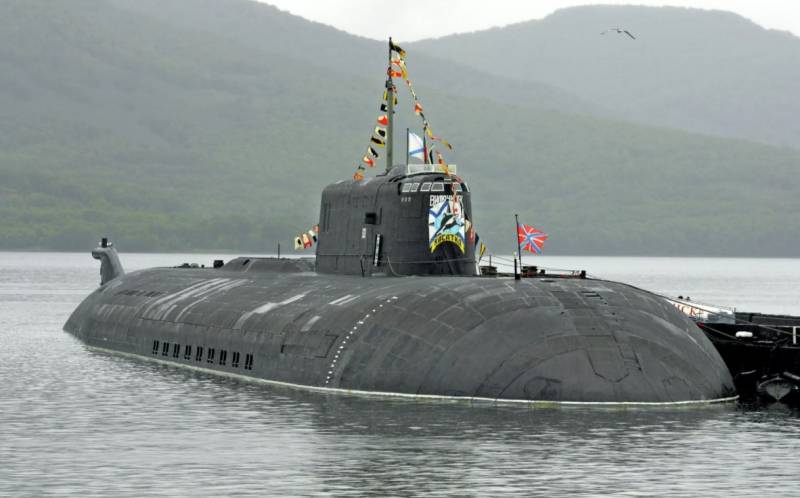
Part of the SSGN of project 949A can be upgraded to project 949AM and become carriers of 72 KR / PKR
At the same time, the conditional project 955K SSGNs, based on the 955A project, will be able to carry about 100-120 cruise and anti-ship missiles. A wide range of cruise and anti-ship missiles will allow promising 955K SSGNs to remain a threat to aircraft carrier and naval strike groups (AUG / KUG), including through destruction of his ships and submarines standing in the basesand used for delivering massive strikes with conventional weapons against enemy ground targets.
If necessary, to strengthen the forces of strategic nuclear deterrence, SSGNs based on the project 955A can carry cruise missiles with a nuclear warhead. Moreover, similarity of acoustic signatures SSBNs of project 955A and SSGNs of project 955K will greatly complicate the enemy's tracking of SSBNs when they enter combat duty in pairs, since the enemy will either need to know for sure whether he is tracking SSBNs of Project 955A or SSGNs of Project 955K, or to double the order of forces intended for hunting Russian SSBN ...
According to the open press, the possibility of building Project 955K (Borey-K) SSGNs was considered by the Ministry of Defense: it was planned that The Russian Navy can receive at least two SSGN "Borey-K"... It is possible that this issue has been postponed until the completion of the construction of a series of SSBNs of project 955A.
MCSAPL project 885 (M)
It was assumed that the project 885 (M) Yasen SSNS could become a unified solution for the fleet. However, as mentioned above, Project 885 (M) has become a long-term construction and a "road construction" of the Russian fleet. According to the open press, the cost of the project 885 (M) SSNS is about 41-50 billion rubles, while the cost of the project 955 (A) SSBNs is about 23 billion rubles.
If we consider the SSGN of project 885M as a SSGN, then in terms of the number of missile launchers / anti-ship missiles on board, it will be almost two times inferior to SSGN of project 949AM, and almost three times inferior to the promising SSGN of the conditional project 955K, while exceeding both projects in cost.
If we consider the project 885M SSNS as a torpedo submarine, then its exorbitant cost and construction time do not allow it to be built in sufficient quantities to saturate the fleet with multipurpose nuclear submarines at least in the amount to compensate for the obsolescence and withdrawal from the fleet Soviet groundwork.
"Husky" - "Laika"
At present, in the interests of the Russian Navy, a project is being developed for a promising multipurpose nuclear submarine of the fifth generation of the Husky project (ROC Laika). There is practically no reliable information on the Husky project. According to some data, this will be a unified project of SSNS / SSGN / SSBNs, according to other data, it will be the development of project 885A, according to the third, that the project "Husky" will use the developments under the project 705 (705K) "Lira" (small-sized submarine fighter? ).
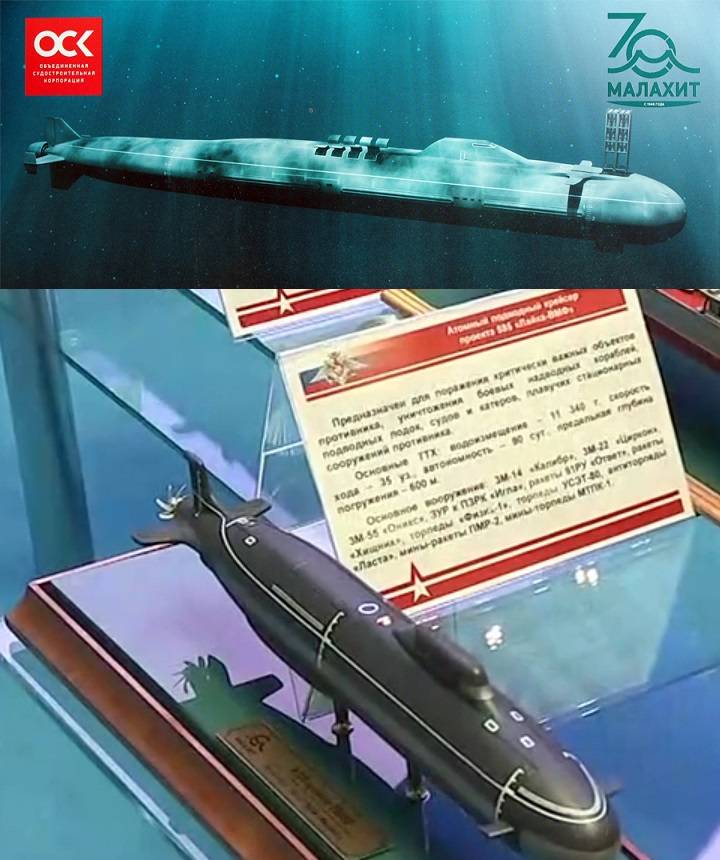
The concept of an unknown submarine from the site of the United Shipbuilding Corporation (USC) and the layout of the submarine "Laika"
Only one thing can be said with certainty - if the Husky project SSNS will differ significantly from the 885M project, which is gradually being mastered by the industry, then there is a risk that the Husky project will turn into another long-term construction / "expensive construction" of the Russian fleet.
PLA from diesel-electric submarines / submarines
Article Nuclear Reactor for NAPL. Will Poseidon lay Dollezhal's egg? the author considered the possibility of creating nuclear submarines on the basis of existing projects of diesel-electric and non-nuclear submarines (diesel-electric submarines / non-nuclear submarines).
Is it possible to insert a compartment with a nuclear power plant into existing projects 636 or 677? Project 636 is too old to implement such radical innovations as an auxiliary nuclear power plant on it. The possibility of inserting an auxiliary nuclear power plant into the submarine of Project 677 can only be assessed by the developers of this submarine together with the developers of the nuclear power plant. The fate of the 677 project is already in limbo, according to some reports, precisely because of problems with the power plant. In this case, the study of the installation of an auxiliary nuclear power plant can both reanimate and finally bury the 677 project.
Even less information is available about the project of the Russian nuclear submarine of the fifth generation "Kalina". The fragmentary information contains information on the development of several versions, both with VNEU and with increased capacity batteries. Whether this information is reliable or is a good wish, one can only guess; accordingly, there is no point in speculating about the possibility of using an auxiliary nuclear power plant on the submarine of the Kalina project. "
At the moment, diesel-electric submarines of project 677 are beginning to be built at the very least, there has not been much information about the Kalina submarine. At the same time, Rosatom still exists, and quite successfully - Russian nuclear technologies are among the most advanced in the world (if not the most advanced).
Based on the foregoing, an inexpensive submarine based on diesel-electric submarines / submarines can potentially be created, but what will be the timing of its creation and technical characteristics is difficult to say. Of the potential drawbacks of SSNs based on diesel-electric submarines / non-submarines, we can assume the worst conditions for crew habitability, making it difficult to increase the autonomy of ships of this type, but this drawback may not be critical for a huge number of scenarios for the use of submarines based on diesel-electric submarines / submarines.
Project 658 (M) and project 627
The first Soviet nuclear-powered ballistic missile submarine, commissioned in 1960, was the Project 658 submarine. It would seem, what does it have to do with the Russian Navy now?
The fact is that to speed up the development time, the project 658 was based on the first Soviet nuclear-powered torpedo submarine of Project 627, to which a missile compartment from diesel-electric submarines with ballistic missiles of Project 629 was added. was engaged in SKB-927, which later became SPMBM "Malachite", then project 143 was developed by TsKB-658 - the future TsKBMT "Rubin".
Of course, this decision was forced, but it suggests that on the basis of one type of submarine, another type of submarine may well be created.
Virginia block v
Another example, if not a change in the type of a ship, then a significant change in its design, is the construction of a series of American multipurpose submarines "Virginia Block 5". Block 5 differs from the Virginia submarine of the previous series by the insertion of a large VPM (Virginia Payload Module) armament compartment capable of accommodating 28 Tomahawk BGM-109 missile launchers or a promising CPS hypersonic complex, which includes a C-HGB hypersonic glider with a conventional warhead on two-stage launch vehicle. The CPS hypersonic complex is comparable in range and size to medium-range ballistic missiles, which actually makes Virginia a kind of simplified analogue of a nuclear submarine with ballistic missiles (SSBN). It can be assumed that the United States is quite capable of creating an intercontinental ballistic missile that can fit in the VPM compartment.
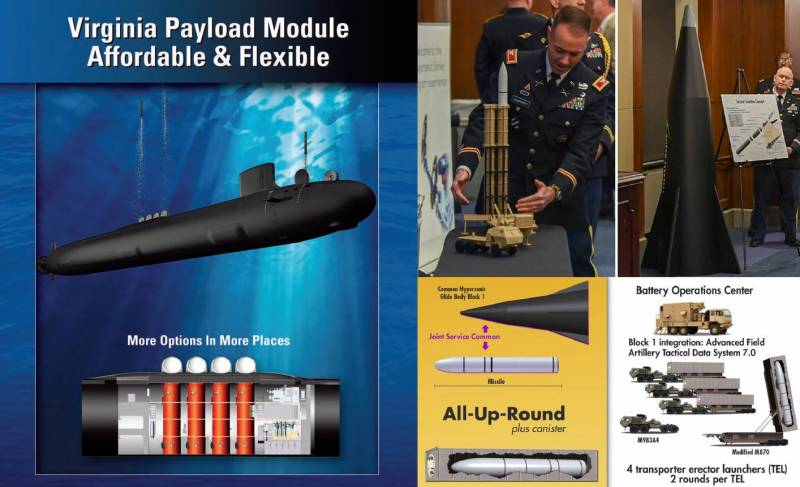
Multipurpose nuclear submarine "Virginia" with the VPM module, as well as mock-ups and images of the LRHW hypersonic complex - the land version of the CPS
As a result of the addition of the VPM module, the total length of the Virginia Block 5 boat, in comparison with the previous series, will increase from 115 to 138 meters, and the underwater displacement increases from 7800 to 10200 tons.
If from a torpedo submarine it is possible to make a strategic submarine missile carrier, and from a multipurpose submarine practically an SSBN, then why not consider the opposite option?
SSNS based on SSBNs
As mentioned at the beginning of the article, Project 955A SSBNs are the most advanced nuclear submarines in construction, being built for the Russian fleet. At the same time, they have a relatively low cost relative to the project 885M SSNS under construction (according to data from open sources).
The question arises - is it possible to implement a conditional project 955M on the basis of the 955A project with minimal time and financial costs?
The main changes will be the removal of the submarine ballistic missile (SLBM) compartment. Removing the SLBM compartment will reduce the length of the 955A project by about 40 meters, as a result of which the total length of the conditional 955M submarine will be 130 meters.
An option may also be considered when 2-4 silo launchers (silos) will be left, in each of which cassettes for 4-5 KR / anti-ship missiles or compartments for larger promising products can be placed.
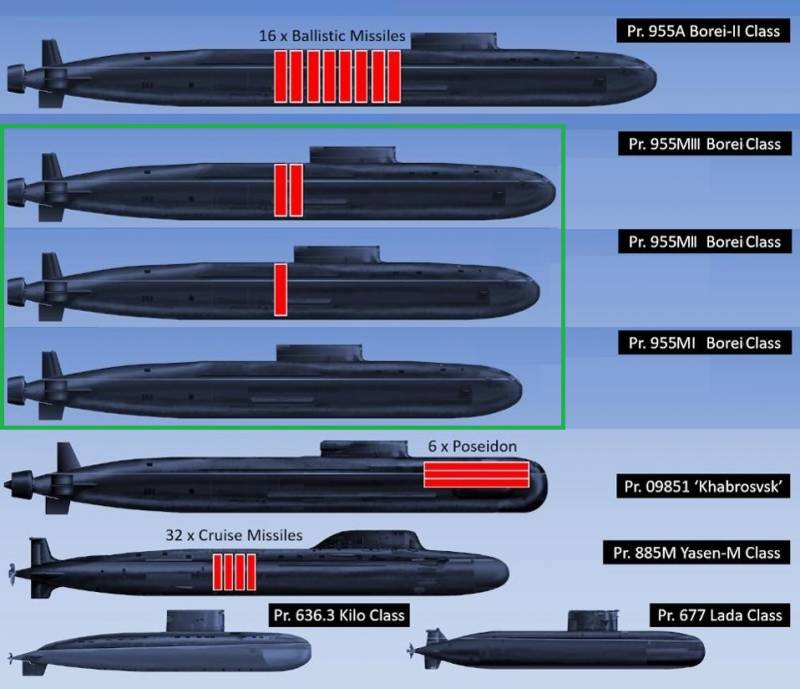
Options for the implementation of the conditional project 955M and comparison of their dimensions with submarines of other types
According to the author, it is advisable to consider two options. The first is when specialized SSGNs of the conditional project 955K are used as carriers of a large number of missile launchers / anti-ship missiles - the successor of the project 949AM SSGN, and in the 955M project there are no vertical silos - if necessary, launch of the anti-ship missiles / anti-ship missiles is carried out from torpedo tubes (TA) The second option is that project 955K is abandoned in favor of unified multipurpose submarines of project 955M with 2-4 large silos.
The length of 130 meters corresponds to the length of the SSNS of project 885M and is shorter than the length of the SSNS of the original project 885, which is 139 meters, and is also shorter than the length of the multipurpose SSA "Virginia Block 5", which is 138 meters. At the same time, the width of the Project 955 (A) SSBN hull is 13,5 meters, which is slightly less than the width of the Project 971 submarine hull - 13,6 meters.
The rejection of the SLBM compartment will also allow the abandonment of some other equipment, for example, SSBN stabilization systems when launching SLBMs, possibly some other equipment.
Ultimately, the underwater displacement of a submarine of the conditional project 955M can be about 10000-12000 tons in a purely torpedo version. For the variant with 2-4 silos, the displacement can be about 12000-14000 tons, which is comparable to the displacement of the project 885M SSNS.
How realistic is it to achieve the above parameters? It can be assumed that this task is quite solvable. According to Project 955, a specialized submarine of reduced dimensions has already been created - Project 09851 "Khabarovsk".
In the design of the submarine project 09851 "Khabarovsk", the features of the project 955 are clearly traced, and the underwater displacement, according to open sources, is just about 10000 tons.
To what extent will the other characteristics of the conditional project 955M meet the requirements for multipurpose submarines?
The operating and maximum immersion depths of Project 955A SSBNs are 400 and 480 meters, respectively, which is inferior to the immersion depth of Project 885M SSBNs, which is 520 and 600 meters, respectively. However, the same Virginia multipurpose submarine has a maximum diving depth of 490 meters, the French Barracuda multipurpose submarine has a working depth of 400 meters, and the British Astute multipurpose submarine has a maximum diving depth of 300 meters.
The maximum underwater speed of Project 885M SSNS is 31 knots, and Project 955A SSBNs - 29 knots. However, the presence of a water cannon on the project 955A SSBN can presumably give a high low-noise speed, compared to the 885M project. In addition, due to a decrease in displacement by 1,5-2 times, the speed characteristics of the 995M project may increase. It is unclear whether a new reactor has been installed on the 885M project, since in the original 885 project there is the same reactor as on the 955 (A) - OK-650V project with a thermal power of 190 MW, but their power is likely to be comparable (the difference is in the first turn in noise and ease of use).
At the same time, the maximum underwater speed of the Virginia submarine, according to various sources, is 25-35 knots, the French multipurpose submarine Barracuda - about 25 knots, the British multipurpose submarine Astute - 29 knots.
The maneuverability of the submarine of the conditional project 955M should be sufficiently high, based on the available parameters of the SSBN of the project 955A, as well as a decrease in the hull length of about 30% and a corresponding decrease in displacement. In addition, to improve maneuverability, the 955A project was initially equipped with two PG-160 submersible two-speed rowing electric thrusters located in retractable columns in the aft of the submarine.
Project 885M SSNS has 10 TA caliber 533 mm, Project 955A SSBN has only 6 TA. But at the same time, the Virginia multipurpose submarine, which is considered one of the best (if not the best), has only 4 TA, the French Barracuda multipurpose submarine has 4 TA, the British Astute multipurpose submarine has 6 TA, so this decrease in performance should not be considered significant.
The hydroacoustic complexes (SAC) of the Project 885M SSMS and the Project 955A SSBNs are made on the basis of one Irtysh-Amphora complex. The author does not have exact data on the differences between the SJSC MCSAPL of project 885M and SSBN of project 955A, but it can be assumed with confidence that the parameters of SJC of project 885M are higher - the area of the SJC antenna is larger, there are additional antennas. The question is different - if it is necessary to make a massive, inexpensive multipurpose submarine, will it be possible to place on it the same SJC as on the 885M project, or is it better? And if it succeeds, then won't the new submarine turn out to be as expensive and complex as the 885M? And if you make a small multipurpose submarine based on diesel-electric submarines / submarines, then its SAC will obviously be inferior to larger submarines, at least due to the impossibility of placing antennas of large dimensions.
The term and cost of R&D for the development of the 995M project is unlikely to be large, and the cost of building a 995M submarine should even decrease in comparison with the cost of the 995A SSBN - there will be no SLBM compartment and some other equipment.
Based on this, the question arises, what do we ultimately want to get - a massive, inexpensive multipurpose submarine with acceptable, albeit not maximum characteristics - some conditional analogue of Project 671 "Ruff", or an ultimatum solution issued in a limited series?
Yes, the resulting multipurpose submarine of the conditional project 955M will be somewhat inferior to the project 885M, yes, it will have larger dimensions, but how critical this difference will be, given that instead of one SSNS of project 885M, two or even three can be built PLA conditional project 995M?
The somewhat large dimensions of the submarine of the conditional project 995M will provide better living conditions for the crew, which will increase the efficiency of its work, and / or increase autonomy, ensure the installation of additional equipment during modernization, for example, promising anti-torpedo protection systems, or anti-aircraft missile system (SAM), capable of countering anti-submarine defense (ASW) aviation from periscope depth, or increase the ammunition.
The question of unification of the submarine fleet - will we not generate a "zoo" of submarines inherent in the Soviet Navy?
First, the "zoo" is in one way or another inherent in all fleets of the world, since the construction time for a series of ships is delayed, new modifications of ships and submarines appear, sometimes significantly differing from the original project. Secondly, the construction of a series of SSBNs of project 955A, SSGNs of the conditional project 955K and multipurpose submarines of the conditional project 955M will just contribute to the maximum unification of the underwater component of the Russian Navy.
As mentioned earlier, the similarity of the acoustic signatures of various modifications of the 955A / 955K / 955M projects can mislead enemy submarines, whose task is to track Russian SSBNs, that is, an indirect way can increase the safety of their deployment by simultaneously withdrawing from the base SSBN 955A, SSGN 955K and several PLA 955M.
The shipbuilding industry of the Russian Federation is quite capable of producing within a reasonable time a series of Project 955A SSBNs in the amount of 8-10 pcs., SSGNs of the conditional project 955K in the amount of 4-8 pcs. and multipurpose submarines of the conditional project 955M in the amount of 16-20 pcs., which, in combination with the 885 / 885M series and diesel-electric submarines / submarines, will provide a sufficient numerical strength of the underwater component of the Russian Navy (an increase in the series will help not only to reduce the cost of a separate submarine, but also to reduce the time construction by working out technical processes and ordering equipment in large quantities).
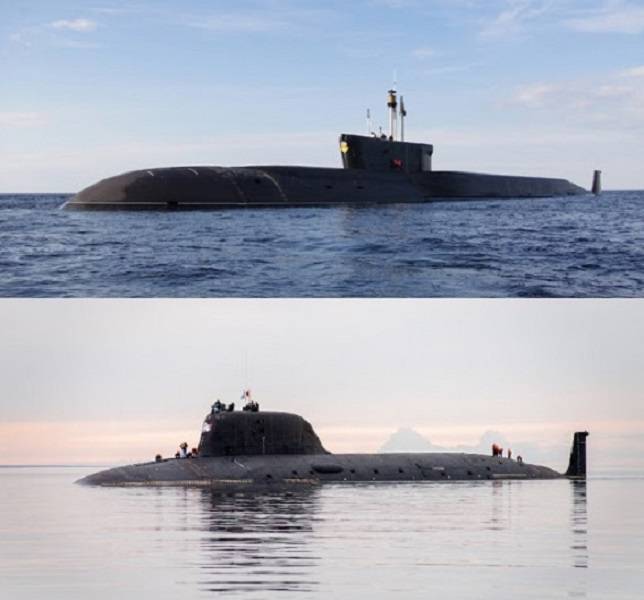
As for the promising project "Husky / Laika" or conventional small-sized submarines based on diesel-electric submarines / submarines, here it is necessary to be guided by common sense - if there is confidence that it will be possible to implement them quickly and relatively inexpensively, then resources must be concentrated on these projects, and if high cost and technical risks are predicted, then these projects are sent for revision, and the current needs of the Navy are covered at the expense of submarines of conditional projects 955K, 955M and construction of a limited batch of SSNS of project 885M.
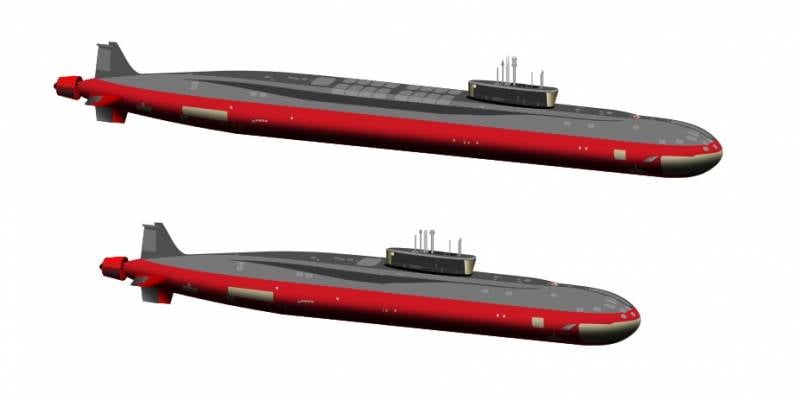
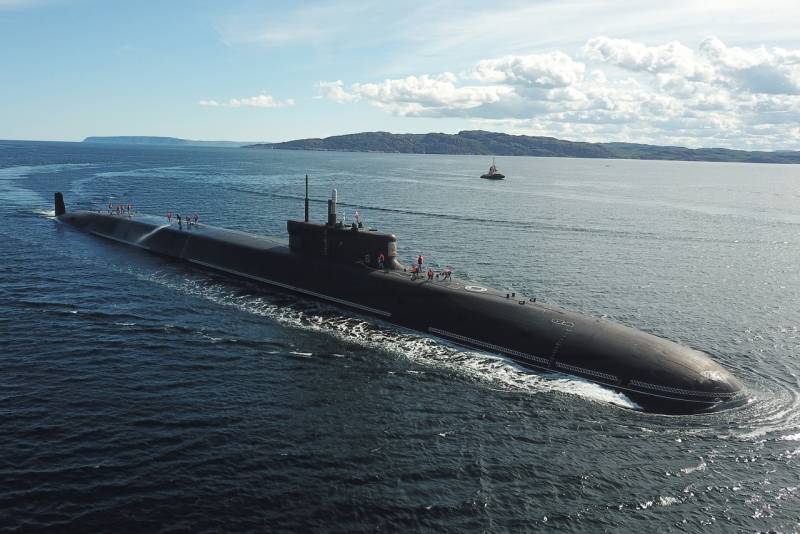
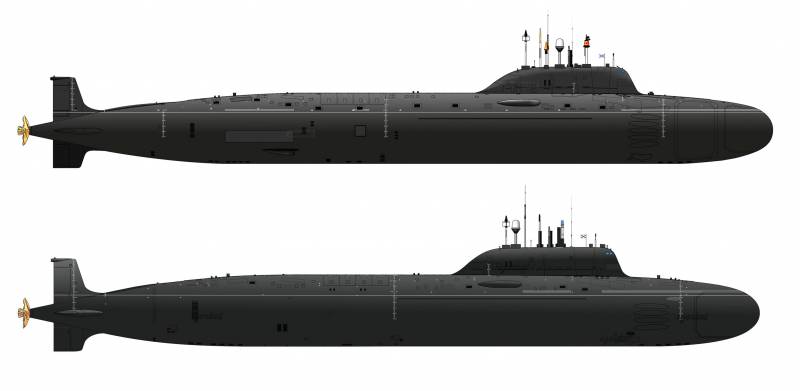
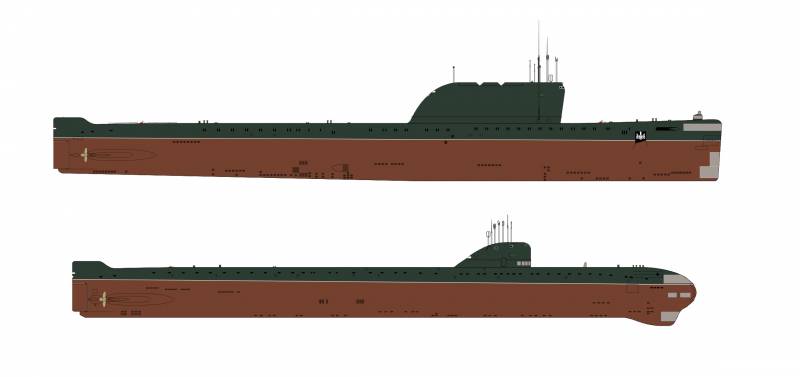
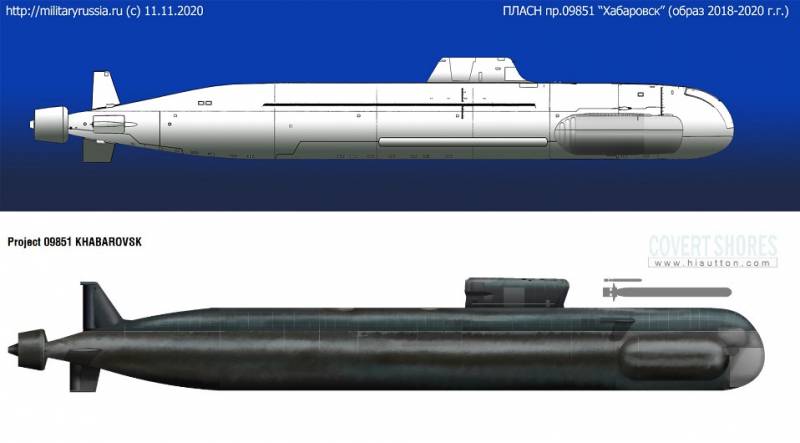
Information